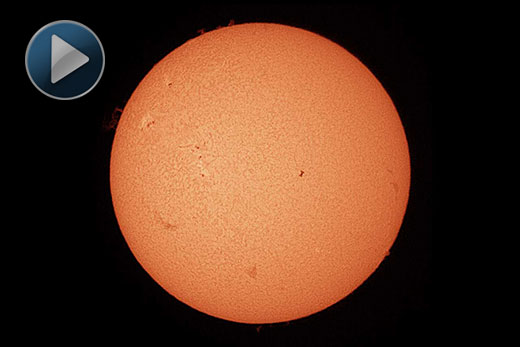It was all about minuscule timeframes, so they had to be precise. On April 16 at exactly 10.42am – that's 10:42 and 20 seconds.
One minute earlier George Gomez rolled ‘record' on the Tauranga Astronomical Society's new Lundt solar telescope.
Snapped from Tauranga – the space station silhouetted against the sun.
And right on cue, the International Space Station roared into view, silhouetted against the surface of the sun. 'It was very exciting,” says George. 'It was a first for me.”
The International Space Station is the tiny but distinctive ‘H' shaped figure – even though the $150 billion structure is bigger than a football field.
It's in low orbit of the earth – 400km out in space. The sun is a further 150 million kilometres out in the centre of the solar system, which explains the ratio of the ‘freeze frame' photo.
And just 1.24 seconds later it was gone again. That's all it took – 1.24 seconds to transit over the face of the sun. And because the camera was recording at 60-70 frames per second, George was able to capture the traverse.
The picture took a little planning. George says you feed your co-ordinates into some software, which provides predictions and alerts about various solar phenomena like satellite flares, eclipses and the space station passing the disc of the sun or moon.
Travelling at 6.6km per second, the space station circuits the earth seven times a day.
George says you should be able to see it with the naked eye in the night sky about 9pm and taking about a minute to rise and set.
He advises you to enter co-ordinates on calsky.com. This will give an accurate altitude for the pass over because the space station is always re-positioning.
The society is now planning for the day the station passes before a full moon. Anything less than a full moon and the station could travel unseen through the shadowed portion.



0 comments
Leave a Comment
You must be logged in to make a comment.